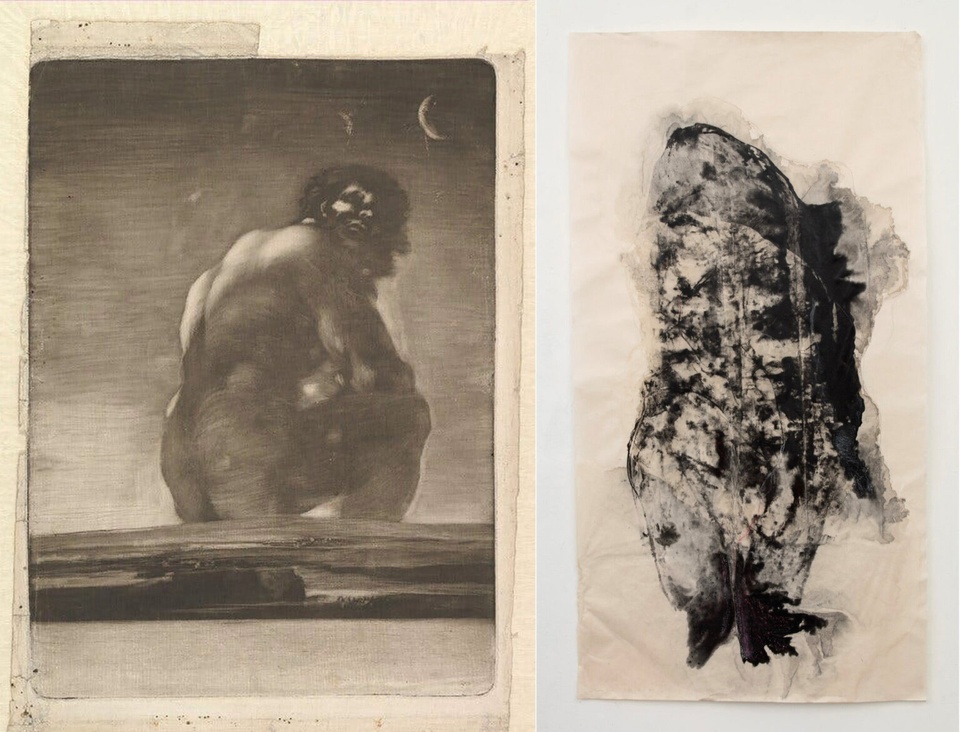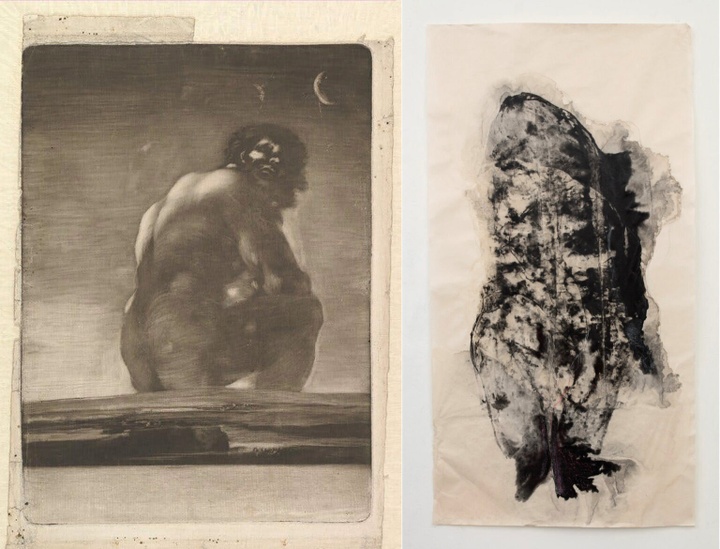Monika Weiss
Monika Weiss is a professor of art and an affiliate professor of performing arts at Washington University in St. Louis. Born and educated in Warsaw, Poland, Weiss is an internationally known visual artist and sound composer whose interdisciplinary practice evokes ancient rituals of lamentation as a poetic response to environmental and societal trauma. She creates sound/music, movement performance, drawings, film/videos, and sculptures. Monika Weiss studio is based in New York City, where she arrived in 2001 as an artist in residence at the Experimental Intermedia Foundation. Since 2023 she has been part of The Smithsonian Institution Archives of American Art.
Weiss’ work has been presented in more than 100 exhibitions around the world. In 2024, her “Metamorphosis (Przemiana)” was acquired into the permanent collection of the Centre of Polish Sculpture in Orońsko. The same year, a sister project, “Metamorphosis (Sound Sculpture),” was commissioned by Laumeier Sculpture Park, where Weiss is the 2024/2025 Visiting Artist in Residence/Kranzberg Exhibition Artist. Solo museum exhibitions include those at the Museum of Memory & Human Rights, Santiago, Chile; Patricia & Phillip Frost Art Museum, Miami; and the Centre of Contemporary Art Ujazdowski Castle, Warsaw, Poland. Weiss’ long-term public sculpture “Nirbhaya,” a monument/antimonument honoring victims of gender-based violence, is currently planned for Dag Hammarskjold Plaza in New York City.
Historically represented by Galerie Samuel Lallouz, Montréal, in 2004 Weiss’ work was shown in a two-person exhibition with American artist Carolee Schneemann at Remy Toledo Gallery, New York. In 2022, she was part of a historical survey of Polish feminist art at A.I.R. Gallery, New York, organized with lokal_30 Gallery, Warsaw. In 2016, her work was included in a survey of contemporary video art at the Stavros Niarchos Foundation in Athens. Currently a member of HyphenHub, a new media artists and curators organization, she frequently exhibits with the Streaming Museum. The recipient of numerous awards, she was awarded the 2023 New York State Council on the Arts and the 2009 New York Foundation for the Arts interdisciplinary art fellowships.
Weiss’ work has been reviewed by The New York Times, ARTnews, Art in America, Art Nexus, Arte Al Dia, Sculpture Magazine, Prague Post, and numerous others. Her books include a chapter in Guy Brett’s “The Crossing of Innumerable Paths: Essays on Art” (London: Ridinghouse, 2019) and a bi-lingual monograph, “Monika Weiss. Nirbhaya” (Centre of Polish Sculpture in Orońsko, 2021) with texts by the internationally acclaimed art historian Griselda Pollock and Mark McDonald, curator of drawings and prints, at The Metropolitan Museum of Art. In 2021, The Met premiered a 30-minute film with Weiss speaking on the art of Spanish artist Francisco Goya and discussing her own practice.
Weiss holds a Master of Fine Arts from the Academy of Fine Arts, Warsaw, and a diploma from Warsaw School of Music. In 2007-2008 she was part of the Planetary Collegium, an international research platform based at the University of Plymouth, U.K.
Affiliations
- Affiliate Faculty, Performing Arts Department, College of Arts & Sciences, WashU.
Select Articles, Chapters, and Publications
- “A Bracing Survey of Polish Feminist Art in Brooklyn Makes a Call for Women’s Rights,” 2022, Ressa Solomon. Published by ARTnews.
- “Monika Weiss-Nirbhaya”, 2021, Griselda Pollock at al. Published by Centre of Polish Sculpture, Oronsko.
- “The Crossing of Innumerable Paths”, 2019, Guy Brett. Published by Ridinghouse, London.
- Monika Weiss-Sustenazo, 2012, Julia P. Herzberg et al. Published by Museo de la Memoria, Chile.
Select Exhibitions and Presentations
- “End Game,” WhiteBox, New York, 2024.
- “Sachs Museum Performance Series: Monika Weiss - Orgē,” Missouri Botanical Garden, Stephen and Peter Sachs Museum, St. Louis, 2024.
- “Monika Weiss - Metamorphosis (Sound Sculpture),” Laumeier Sculpture Park, St. Louis, 2024.
- “Monika Weiss: Metamorphosis-Przemiana,” Centre of Polish Sculpture in Orońsko, Sculpture Park, opened to public as part of permanent collection July 2024.
- “Monika Weiss performance,” A.I.R. Gallery, New York, 2022.



















